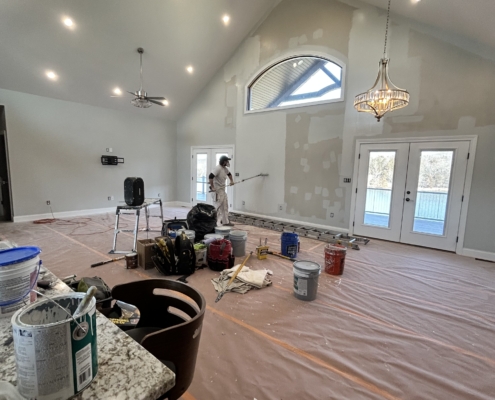June 25, 2025
As homeowners look for durable, low-maintenance materials, PVC (polyvinyl chloride) trim has become increasingly popular for exterior applications. It resists rot, insects, and moisture far better than traditional wood. However, one common and costly mistake many make is attempting to paint PVC without understanding the risks. While it may seem like a good way to match trim or add curb appeal, painting exterior PVC can lead to long-term problems—both cosmetic and structural.
The Problem with Painting PVC
PVC is not like wood. It’s a non-porous plastic, which means it doesn’t absorb paint in the same way traditional materials do. Most standard exterior paints simply don’t adhere properly to PVC. Even with primer, the surface remains slick, making it prone to peeling, cracking, and bubbling—especially when exposed to direct sunlight or temperature fluctuations. Over time, this results in an unsightly, flaking finish that detracts from your home’s appearance and requires costly maintenance.
Worse yet, many homeowners (and even contractors) unknowingly apply dark paint colors to PVC. This can be a serious issue. Dark colors absorb more heat, and when applied to PVC, can cause the material to warp or distort over time. PVC expands and contracts with temperature shifts, and dark paint accelerates this movement, potentially compromising structural integrity and creating gaps at joints and seams.
What to Do Instead
Rather than painting exterior PVC, consider these better solutions:
-
Use Color-Matched Cellular PVC Products: Many manufacturers now offer PVC trimboards in pre-finished colors or with a laminated woodgrain look. These come with warranties, require no painting, and are engineered for UV resistance.
-
Wrap PVC with Painted Aluminum Coil: This technique allows you to match any color while protecting the PVC. It gives a clean, painted look without risking peeling or distortion.
-
If You Must Paint—Use Caution: Only use a paint specifically formulated for vinyl or plastic. Apply a bonding primer first and keep colors light. Even then, expect to repaint periodically as paint adhesion on PVC is never permanent.
Final Thought
Painting PVC might feel like a quick design fix, but it’s a decision that can lead to disappointment and unnecessary costs. Know your materials, trust the right finish, and when in doubt—consult a professional who understands exterior building science.





